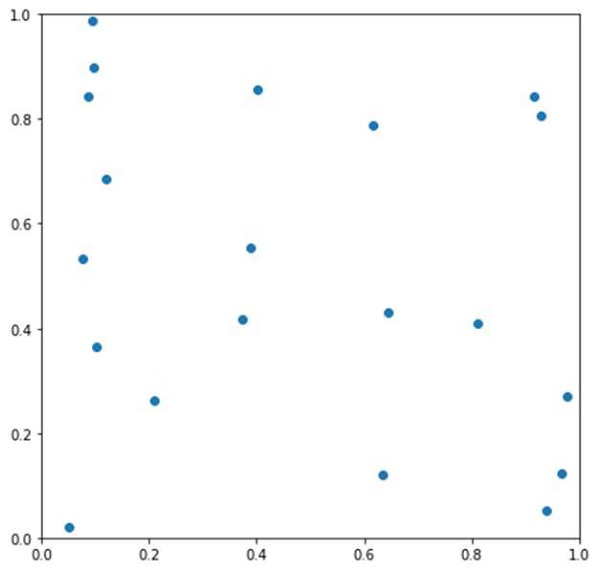
 Data Structure
Data Structure Networking
Networking RDBMS
RDBMS Operating System
Operating System Java
Java MS Excel
MS Excel iOS
iOS HTML
HTML CSS
CSS Android
Android Python
Python C Programming
C Programming C++
C++ C#
C# MongoDB
MongoDB MySQL
MySQL Javascript
Javascript PHP
PHP
- Selected Reading
- UPSC IAS Exams Notes
- Developer's Best Practices
- Questions and Answers
- Effective Resume Writing
- HR Interview Questions
- Computer Glossary
- Who is Who
Generating a movie from Python without saving individual frames to files
Using the FuncAnimation method, we can create a film. We will create a user-defined method, update, to keep on changing the position of particles and at the end, the method would return the scatter instance.
Steps
Get the particles initial position, velocity, force, and size.
Create a new figure, or activate an existing figure with figsize = (7, 7).
Add an axes to the current figure and make it the current axes, with xlim and ylim.
Plot the scatter for initial position of the particles.
Makes an animation by repeatedly calling a function *func*. We can pass a user-defined method that helps to change the position of particles, into FuncAnimation class.
Show the figure using plt.show().
Example
import matplotlib.pyplot as plt
from matplotlib.animation import FuncAnimation
import numpy as np
dt = 0.005
n = 20
L = 1
particles = np.zeros(n, dtype=[("position", float, 2),
("velocity", float, 2),
("force", float, 2),
("size", float, 1)])
particles["position"] = np.random.uniform(0, L, (n, 2));
particles["velocity"] = np.zeros((n, 2));
particles["size"] = 0.5 * np.ones(n);
fig = plt.figure(figsize=(7, 7))
ax = plt.axes(xlim=(0, L), ylim=(0, L))
scatter = ax.scatter(particles["position"][:, 0], particles["position"][:, 1])
def update(frame_number):
particles["force"] = np.random.uniform(-2, 2., (n, 2));
particles["velocity"] = particles["velocity"] + particles["force"] * dt
particles["position"] = particles["position"] + particles["velocity"] * dt
particles["position"] = particles["position"] % L
scatter.set_offsets(particles["position"])
return scatter,
anim = FuncAnimation(fig, update, interval=10)
plt.show()
Output


Advertisements
